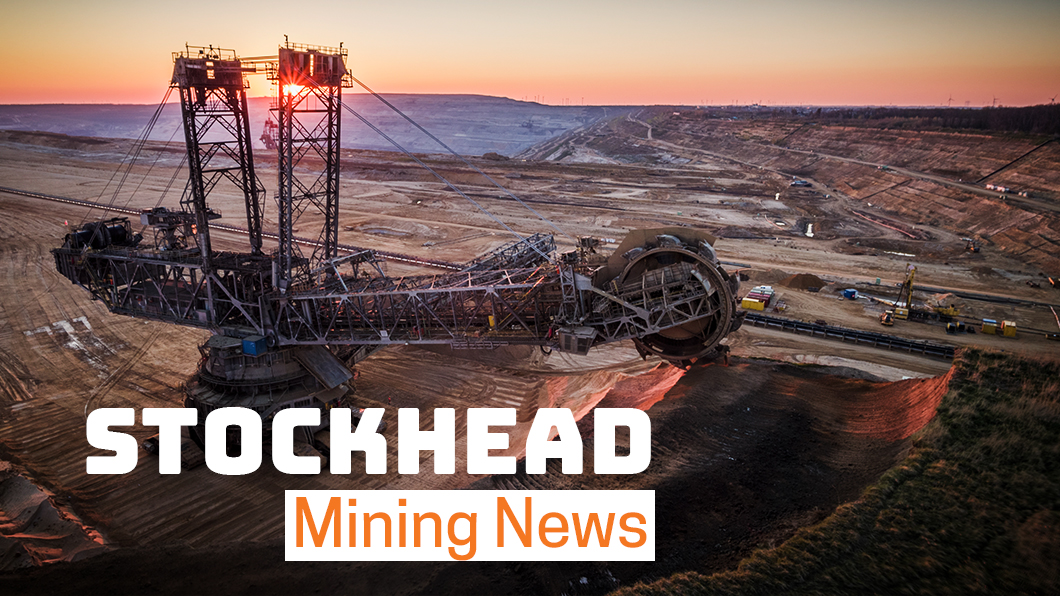Here’s 8 reasons to get excited about Talga in 2020

Pic: Schroptschop / E+ via Getty Images
Special Report: With customer and financing discussions well underway, here’s eight reasons why 2020 could be a breakout year for this $96m market cap company.
Talga (ASX:TLG) plans to be the first and largest battery anode producer in Europe, an emerging electric vehicle powerhouse.
Talga’s vertically-integrated low-cost Vittangi anode project in Sweden has the potential to make big profits over its initial 22-year life, according to a May pre-feasibility study.
But the broader market driving the development, slated to begin stage-one construction later this year, is already changing.
Europe’s emergent EV market is growing a lot faster than people expected.
“We cover a few different verticals and markets because we want maximum margins over the short, medium, and long-term,” Talga’s Mark Thompson says.
“We’ve made significant investments in people and IP to set up a vertically integrated company. Now coming into project development, the focus is on executing on customer agreements and financing. The groups we are working with along that process agree the growth potential of this company is just massive.”
This is why Talga could be set for a rerating in 2020 and beyond:
Euro battery markets have reached ‘tipping point’
The fastest demand growth for lithium-ion battery manufacturing is in Europe, not Asia.
Europe’s battery factories were already heading towards 300,000tpa of anode demand by 2028, Thompson says.
“But in recent months that demand has increased by probably another 25 per cent — that we know of — from 300,000 to closer to 400,000 tonnes of anode per year,” he says.
“Based on our discussions with customers that number may still be conservative.”
“Most automotive manufacturers like VW are rapidly expanding their plans for electric vehicles or bringing forward production timelines to meet stringent EU emission regulations. They need to lock up their supply chains over the next 12 months to be ready for when deliveries step up hard in 2023.
“We’ve reached a tipping point.”
Scaling up as the EV boom gathers pace
Long term, Talga will need to add capacity to meet increasing demand for anodes – not just in EVs, but for power grid storage, power tools and all the other battery devices.
Its project already boasts the world’s highest-grade JORC compliant graphite resource at Nunasvaara — 12.3 million tonnes at 25.5 per cent carbon for 3.1 million tonnes of graphite.
Not only is it more than double the size of the Nunasvaara ore reserve that underlies the PFS, it is higher in grade and opens up a range of potential options for development, Thompson says.
“We are completing a scoping study on Niska soon,” he says.
“Niska could have its own separate development pathway, or we could combine it with the current Nunasvaara project.
“Our graphite resources across multiple deposits and projects in north Sweden total 52.7 million tonnes at 17.7% graphite. Being Europe’s largest contained amount of graphite with demonstrated suitability for battery anode manufacturing, it gives us the flexibility to increase production in step with our customers growth and their projected demand.”
Europe wants local, environmentally friendly supply
This isn’t public relations speak – Europe’s stance on establishing a sustainable local supply chain has been widely reported.
Importantly for Talga, there’s no anode production in Europe right now and Vittangi boasts a very small environmental footprint.
“It is designed to help build the world’s cleanest, greenest high performing lithium-ion batteries,” Thompson says.
“Because we use sustainable hydro power for processing, and because we don’t have a synthetic product – it’s a natural graphite – it actually got the lowest CO2 footprint of any form of anode.
“This makes it attractive to larger customers and we are seeing more demand across the market from those who have that in mind. It’s important to them, and it is increasing their interest in us.
“It is a strategic asset; strategic for Sweden and strategic for the EU.”
For Talga, demand is already increasing
Talga’s customer list itself is continuing to grow.
“At the start most of our potential customers were battery cell or battery makers, or electronics companies associated with buying high power batteries,” Thompson says.
“But we’ve now got an increasing list of automotive companies looking for large-scale anode production for their EV supply chains or pushing their battery makers towards our products.”
Unlike raw graphite, graphite anode is an advanced product that requires extensive physical testing in batteries by manufacturers and end users at increasing volumes prior to commercialisation.
Talga is currently investing in upscaled equipment and other components of Talnode®-C production at its German pilot plant to meet these ongoing customer qualification programs.
“We’ve built some of that capacity in Germany already — essentially adapting to enable larger anode samples to be produced there,” Thompson says.
“But the carrot is there to do massive volumes – which is what the EV market is – and you need to ramp up your sample validation production even further to meet EV standards.”
Talga isn’t just clean, it’s low cost
Talga’s competitors are the giant chemical companies based in Asia. Yet Vittangi’s high-grade ore, efficient processes, high level of integration and low-cost/environmentally-friendly power source puts it right at the bottom of the cost curve.
“The difference is that [the chemical companies] buy materials from China, processed using coal power with high environmental impacts, before reprocessing them and transporting the materials halfway around world, so they actually have quite a dirty supply chain emissions-wise,” Thompson says.
“We will be a cleaner and cost competitive choice for Europe.”
Stage 1 construction could start this year
The smaller initial stage plant should start production in 2021, which “perfectly aligns” with the ramp-up plans of many of Talga’s customers.
“Stage one is to get into the market,” Thompson says.
“From a customer’s point of view, they want consistency and quality. They really want to see increased scale before they commit to serious amounts of production.
“Stage one shows you can produce high-quality anode consistently at scale.
“By the time we get to stage two, the larger plant, that’s where the money starts getting made.”
Talga tech is miles ahead of everyone else
A decade of western companies working in the graphite space has taught us that the rawer the material, the more they have to compete with China on costs, Thompson says.
“That’s why we have never seen anyone really fly economically in the graphite space. They’ve just been duplicating that raw materials approach,” he says.
Now there’s a trend for everyone to go further downstream, but here they are competing with established downstream processors.
And these companies are still in raw materials, Thompson says.
“What western companies call ‘downstream processed’ or ‘battery anode material’ the battery makers still call graphite,” he says.
“For them, it’s not anode until it’s coated or in a form they can tip straight into their production line.
“That part holds the bulk of the profit margins in the supply chain, and that’s what Talga does.”
The scale of the European EV market is phenomenal, but product development and validation is a multi-year process, Thompson says.
“People have said to me that Talga is a few of years ahead of the those who are trying to emulate what we are doing. Because we built a lot of the battery product capability and IP ourselves, and because few if any mineral resource companies have the knowledge, the in-house team, and the in-house processing capabilities to make these materials like we do.
That is the barrier to entering the world of chemical companies like POSCO, Hitachi, Mitsubishi and others who make anode.”
Cheap graphene production could be a game changer
Thompson compares graphene to carbon fibre’s journey from exclusivity to ubiquity.
In the 1970s, carbon fibre was used in aerospace exclusively; but now you can find carbon fibre in golf clubs, sunglasses, even USB drives.
“We are looking at potential ways to extract graphene from the same process as our anode production, which could result in relatively little incremental cost and effort.” Thompson explained.
“It then becomes part of that production line – even though the customers for our anodes and additive products are quite different.”
The markets for additives include industrial products like paint and concrete.
And Talga is already in commercial talks to secure customers for its graphene.
“Talga only needs one or two of these large tonne deals to come through,” Thompson says.
“Getting the project built on the anode production actually opens up a world of potential large-scale graphene production at a competitive price, because it is coming out of the same production line.
“We’ve got some really fantastic programs underway with great customers.
“I’m confident in these programs’ potential to progress to commercial agreements.”
This story was developed in collaboration with Talga Resources, a Stockhead advertiser at the time of publishing.
This story does not constitute financial product advice. You should consider obtaining independent advice before making any financial decisions.
Related Topics

UNLOCK INSIGHTS
Discover the untold stories of emerging ASX stocks.
Daily news and expert analysis, it's free to subscribe.
By proceeding, you confirm you understand that we handle personal information in accordance with our Privacy Policy.








